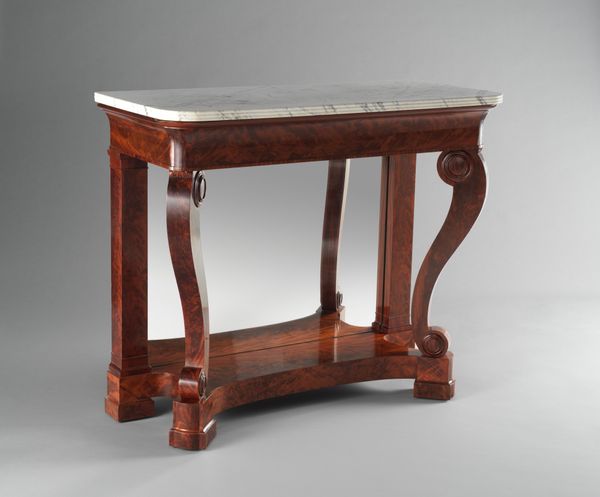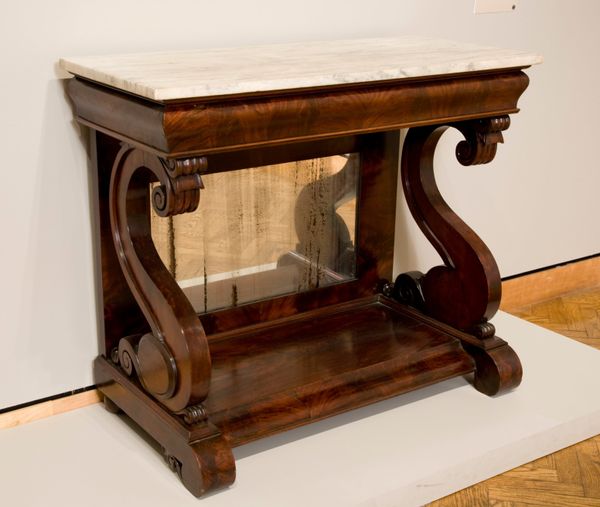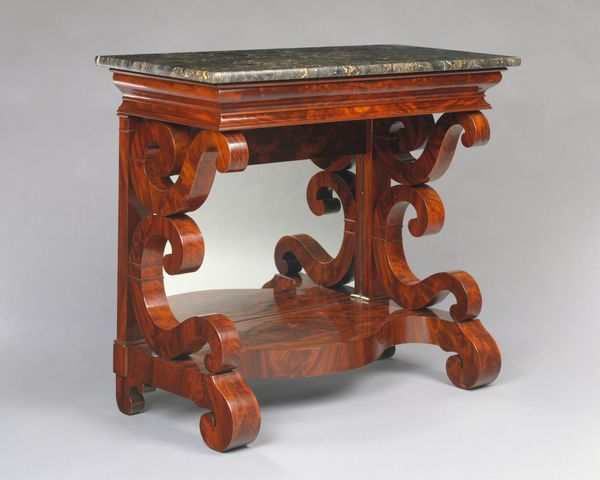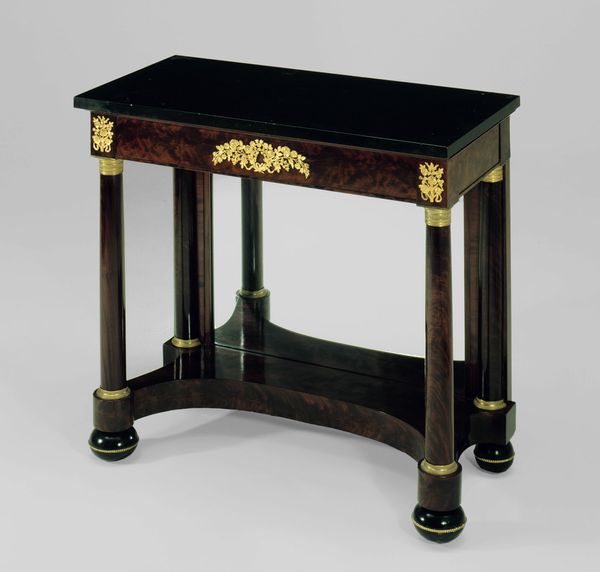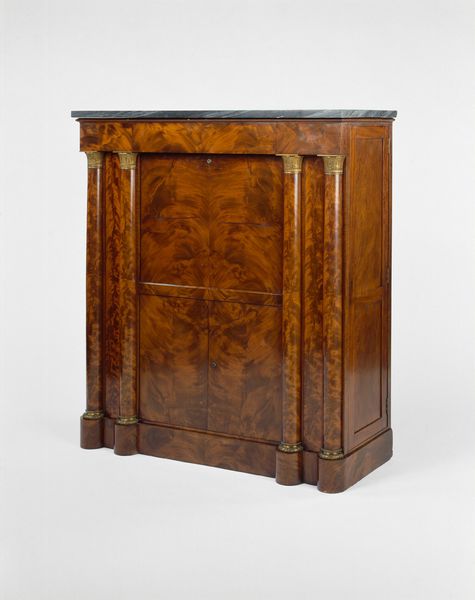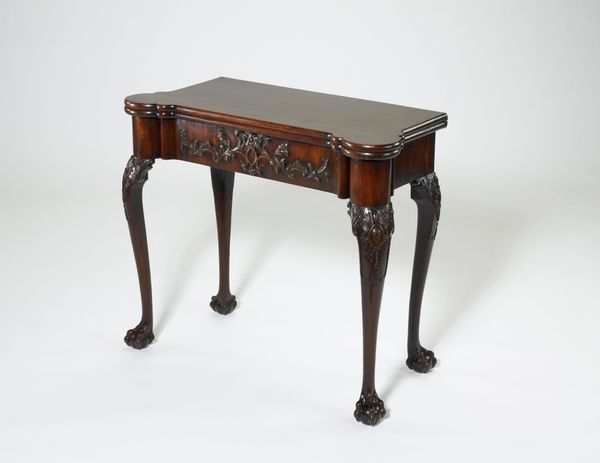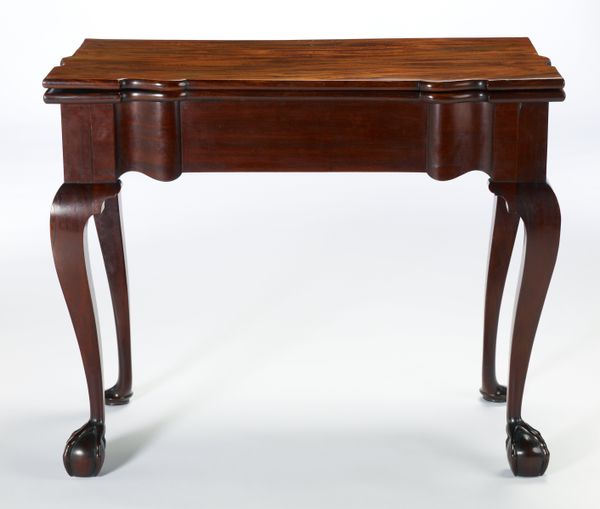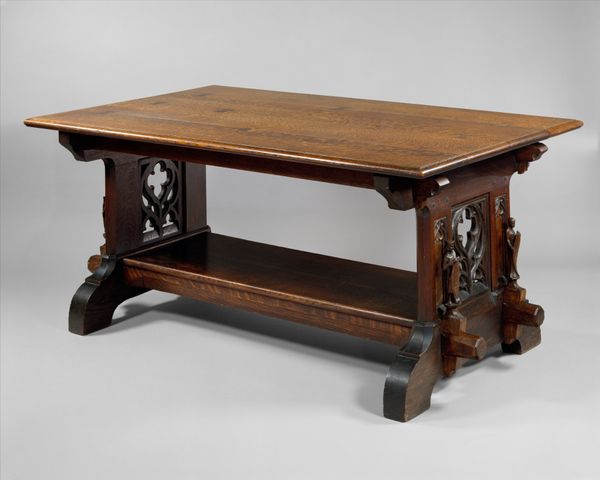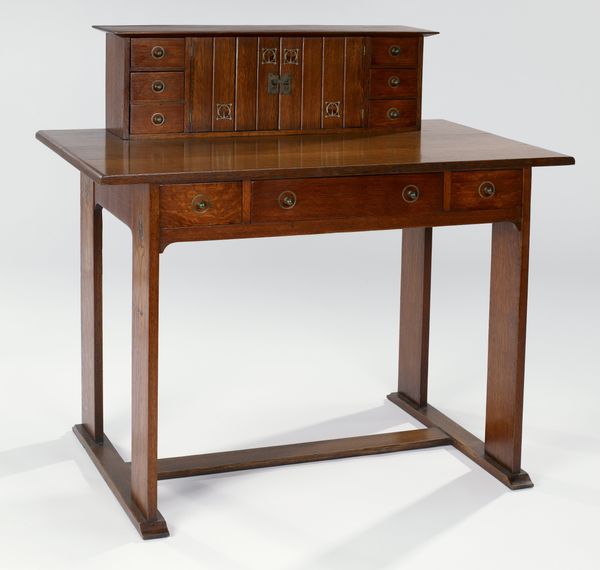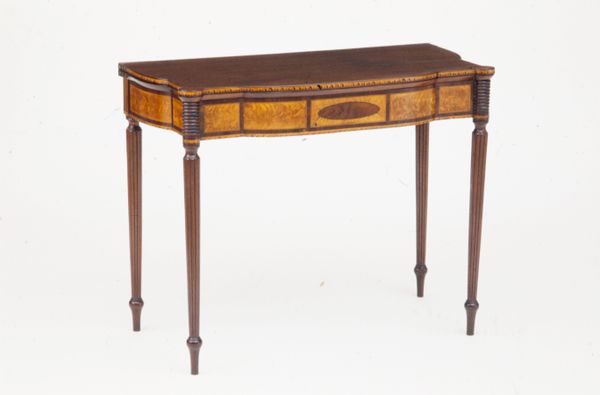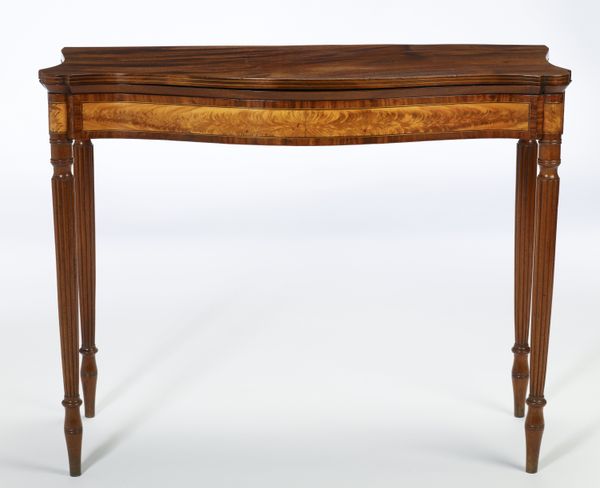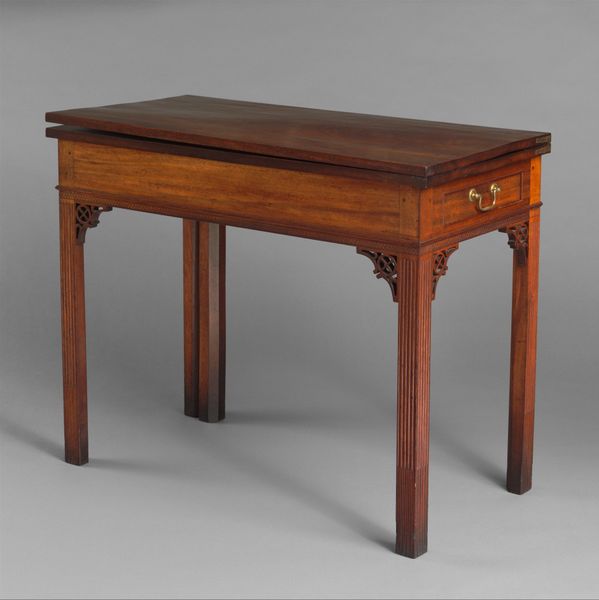
relief, sculpture, wood, marble
#
neoclacissism
#
sculpture
#
relief
#
furniture
#
geometric
#
sculpture
#
wood
#
marble
Dimensions: 37 1/4 x 42 x 19 1/2 in. (94.62 x 106.68 x 49.53 cm)
Copyright: Public Domain
Editor: Here we have a pier table, likely crafted around 1845. It’s a mix of marble and wood, and what strikes me most are these robust, column-like legs. It feels very formal and architectural. What do you see in this piece? Curator: I see more than just formal design. The Neoclassical style, especially in furniture, often served to project power and status. Consider who might have commissioned and owned this piece. How does the choice of marble and the almost severe geometry reflect the values of the elite in the mid-19th century? It's not just a table, it's a statement. Editor: So, it’s less about pure aesthetics and more about conveying a message? How did furniture function in that era, beyond just utility? Curator: Precisely! Think about the social rituals that would have taken place around it. Displaying wealth and taste was crucial for maintaining social hierarchies. The mirror behind this table probably amplified light and showed off the owner's possessions. Ask yourself how the table facilitates certain behaviours. Who did it include or exclude? Editor: That makes me consider the labour involved in sourcing the materials and crafting this object. It wasn't just design; it was exploitation. Curator: Absolutely. And whose stories are not being told? Focusing on the people behind it and those excluded encourages us to reflect critically on our own social structures. How does art support, or challenge, that function? Editor: It's a sobering thought - seeing beauty and craftsmanship while understanding the social inequalities embedded within. I'll never look at furniture the same way again. Curator: That's the power of contextualizing art. Now you see, not just look.
Comments
minneapolisinstituteofart almost 2 years ago
⋮
Similar to other furniture in the Grecian style, this pier table is geometric in design and decorated with richly grained veneers and architectural motifs, such as fluted columns and carved capitals. The Egyptian marble top was an expensive option in the mid 19th century. This table was one of a number of objects donated in 1970 to the Institute by the Twin Cities architect Rhodes Robertson (1886-1974), who came to Minnesota from Somerville, Massachusetts around 1920. Robertson inherited 18th and early 19th century portraits, silver, and glass, as well as furniture from five generations of his Massachusetts ancestors. Portraits of Robertson's great, great grandmother and his great grandmother by the18th-century New England painter Joseph Badger are on display in the Connecticut Room.
Join the conversation
Join millions of artists and users on Artera today and experience the ultimate creative platform.
